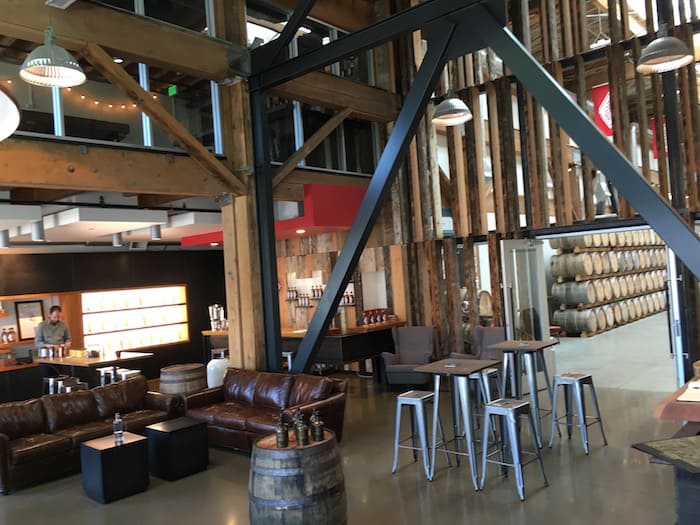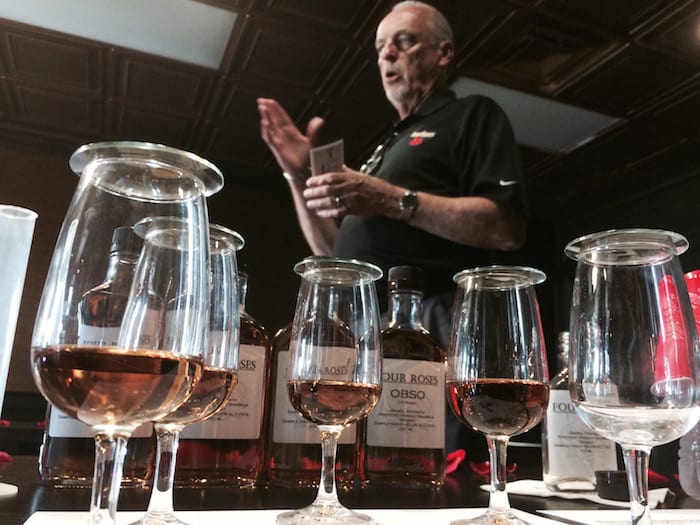Editor’s Note: Welcome to our new Ask a Distiller feature, a reoccurring column where we’ll take reader questions and topics and get answers from some of our favorite distillers! If you’ve got a burning question about life at the distillery, send them to our managing editor, [email protected].
For this first column, we’ll be getting some advice on how to have a great time when visiting a distillery from Andy Garrison, the distiller at New Deal Distillery and Stonebarn Brandyworks, both in Portland, Oregon:
According to some recent stats from the American Distillers Institute, there now approximately 1,200 distilleries in the U.S., and hundreds more are on the way. With distilleries now in almost every state, and over 600 of them producing whiskey, there’s never been a better time to get out and visit some tasting rooms! It can be extremely rewarding to see just when and how your favorite spirits are made, and many distilleries offer tasting room exclusives or limited releases that are hard to find anywhere else.
Visiting distilleries is pretty much my favorite thing to do when traveling; the only thing I like more is getting to drink beer with breakfast. I’ve been to about 60 distilleries, and while it can be a lot of fun, it can be a sometimes strange experience if you’ve never done it. Visiting a brewery makes sense to most people: it’s just like a normal bar, except they make their own beer. To have a great time at a brewery, you order a beer and then you drink it, just like any other place you might order a beer.
Visiting a distillery is more like wine tasting, where you’ll typically have a brief tour before sampling a flight of different products. The vagaries of state liquor laws add plenty of wrinkles, allowing some distilleries to serve delicious cocktails while others can only dole out tiny plastic thimbles of room-temperature spirits.
While some places feature sit-down bar areas with food and full cocktail menus, you’re just as likely to be served samples at a makeshift ‘bar’ that does double duty as a lemon-peeling station. It’s best not to expect anything, and if you have really need to have a Manhattan and a shrimp cocktail call ahead to make sure the distillery isn’t in a storage unit underneath a freeway.

1. Be Prepared!
You’d be surprised, but a lot of visitors to distilleries don’t know that distilleries make spirits and not beer! If you’re bringing some friends or family with who don’t “Whisk(e)y 4 Life” the way you do, make sure they know what they’re in for. You’ll likely be downing at least a couple of tastes of straight liquor, so it’s critical to make sure you’ve eaten and have safe transport. In the city, public transportation or cabs are a great fallback if you find yourself suddenly a little ‘over-sampled,’ but if you’re visiting a farm distillery in rural Montana you’ll need a firm designated driver. Similarly, help the distillery prepare – if you have a big group, definitely call ahead or try to visit in off-peak hours.
2. Ask Questions!
One of the magical things about visiting craft (or non-craft) distilleries is you never know who you’ll end up speaking to. The person leading your tasting might be a college student who responded to a craigslist ad, or it could be the owner and head distiller. Generally you can guess by how tired they look, but don’t be afraid to ask what they do or how they got involved.
If you’ve got a question, ask it! Your host wants an interactive group who is having fun and learning about their spirits, not a bunch of silent people staring at them. Conversely, if they don’t answer your question, be respectful of that – we all have our painstakingly developed secret techniques or weird business stuff we’d like to keep to ourselves.
3. Tell’em What You Like!
The staff at a distillery wants you to be happy and have a good experience, and they also generally know where their products fit into the spirits landscape. By letting your host know a bit about what you like to drink and why, they can better guide your tasting. This is especially true at places that make enough spirits where you won’t get to try everything. Try to have an open mind and sample things outside your usual dram, but knowing you like cognac and hate spicy things will help tasting staff lead you towards apple brandy and away from the ghost chili whiskey.

4. Be Courteous!
They say liquor has a way of loosening people’s tongues, which can occasionally be funny (I get to hear a lot of puking-related anecdotes in the tasting room), but some can go a bit to far. It’s totally fine to dislike a spirit, and as distillers get more creative and adventurous there will be more ‘love it or hate it’ products out there. But even if your gut reaction is an all-caps “YUCK” remember the person pouring the sample might have spent years of their lives and thousands of dollars to make it taste that way. Silence is a great response to grossness, and if pressed for feedback a simple “this wasn’t for me” or “I didn’t care for the tomato & spinach flavored whiskey” works great, too.
Distillers almost always have cool things tucked away like upcoming releases or tasty experiments, which get shared with the enthusiastic and appreciative. If you see people in the back tasting samples out of the barrels, they got there by offering praise, not yucks.
5. Leave A Tip!
Many distilleries charge a small tasting or tour fee, but these often don’t really cover the cost of the tasting flight and the time it takes to lead it. Unless the distillery has a bar and cocktail program, the tasting room is there to sell bottles. If you aren’t planning to purchase or didn’t find a spirit you like, tipping goes a long way toward showing you appreciated at least the time spent with you, if not the liquor. At a brewery you’d still tip the bartender a buck for the thirty seconds it took to pour a beer, so why not tip the poorly paid tasting staff after that person spends ten minutes answering your questions.








